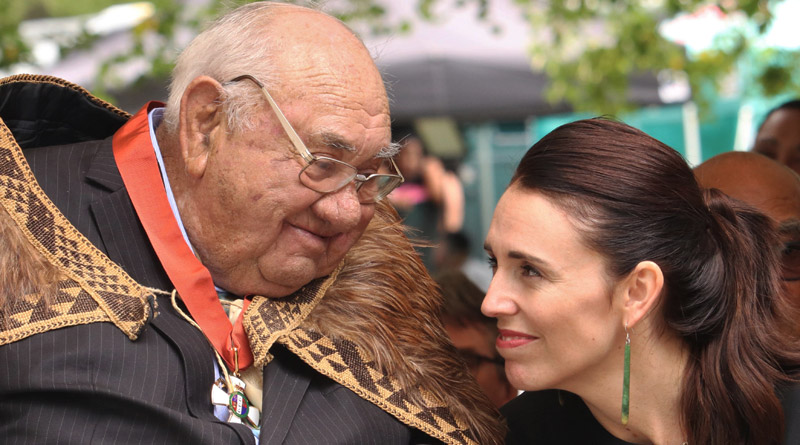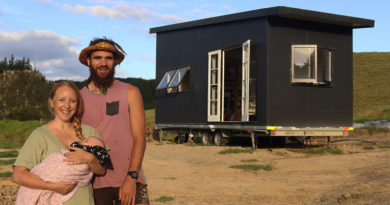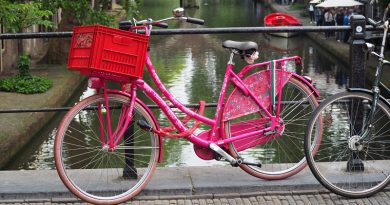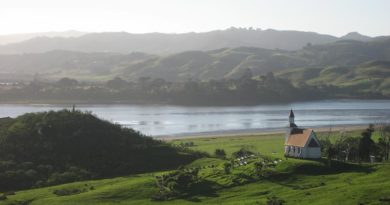Sir Hekenukumai Puhipi: The bridge builder
Sir Hekenukumai spent a lifetime building bridges.
At first there were bridges of concrete and timber, 158 of them by some counts. They span rivers and gullies the length of Northland, built by the man first known as Hector Busby, later as Uncle Hek and, finally, Sir Hekenukumai Puhipi.
Later he built bridges of a different kind between Māori and Pākehā because, for all its failings, he believed in the promise of a bicultural New Zealand founded on the Treaty of Waitangi.
Perhaps the most important bridges, however, were those he built across the Pacific.
He reconnected Māori with their cousins throughout Polynesia and brought the ancient arts of ocean voyaging and celestial navigation back to life, using stars, currents and birds — as his ancestors had done centuries before — to find his way between tiny specks of land sprinkled across Te Moana-nui-a-Kiwa, the vast Pacific Ocean.
By doing so he shattered the fiction that Māori had washed up on the shores of Aotearoa by chance.
In the words of Te Rūnanga o Te Rarawa chairman Haami Piripi, one of the key speakers when Sir Hek was knighted at Waitangi: ‘‘It affirmed our oral history that we are in fact navigators extraordinaire who traversed the greatest expanse of water on the planet for millennia … His feats dispelled the long-held myth that we Maori are here by accident and not by design.’’
· · · · ·
Hector Busby (Te Rarawa, Ngāti Kahu) was born in 1932 in Pukepoto, a settlement between Kaitaia and Ahipara, to Timoti and Wini Busby.
With the couple’s six children plus those from Wini’s earlier marriage and a couple of whangai children, it was a busy, hard-working household of 11 kids and two adults.
Sir Hek described his upbringing as poor but happy and credited his grandmother Raiha, who spoke little English, with his grasp of te reo Māori.
He left school the day he turned 15, taking a job at a bakery before working in the Far North’s gumfields.
In the early 1950s he went into the contracting business with his brothers, starting a 40-year bridge-building career.
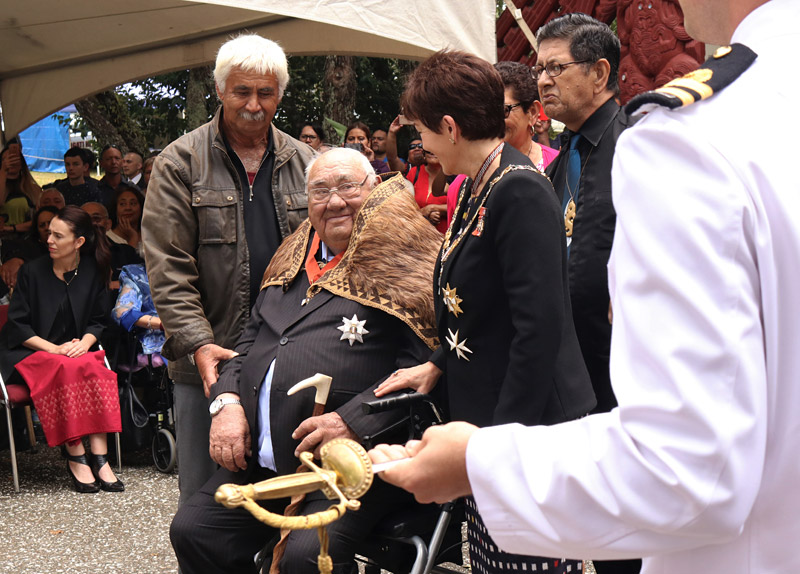
Later in life Sir Hek regretted his lack of formal education but said he had made up for it through sheer determination to make something of his life.
While school held little attraction for the young Hector he loved visits to Waitangi, where he would slip away from his classmates and spend hours admiring the great waka Ngātokimatawhaorua.
Little did he know that he would later become its guardian, or that he would lead its restoration in 1973 and oversee its return to the water on Waitangi Day the following year.
Sir Hek built a total of 52 waka, 10 of them in Hawaii. One, Te Hono ki Aotearoa (The Link to New Zealand), is on permanent loan to a museum in the Netherlands and is paddled on special occasions around Europe.
His passion for ocean voyaging, however, came when he was already in his 50s.
In 1985 the Hawaiian double-hulled sailing canoe Hōkūle’a landed at Waitangi as part of the Polynesian Voyaging Society’s 12,000 nautical mile Voyage of Rediscovery.
It was an encounter that would change Sir Hek’s life and rewrite New Zealand history.
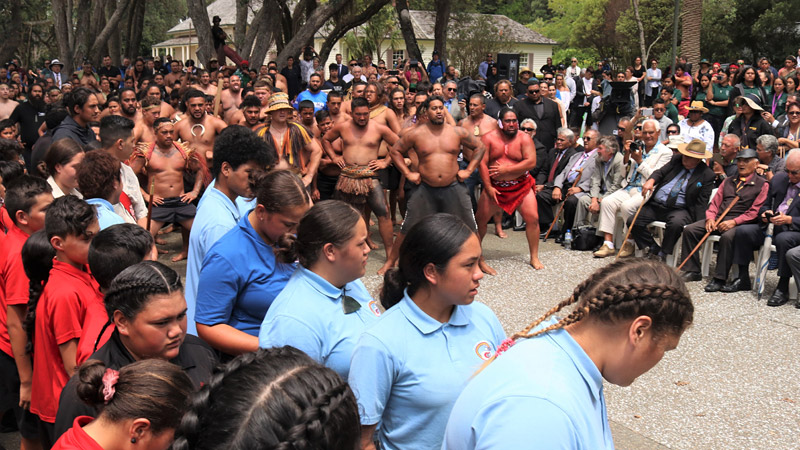
During the pōwhiri for the Hōkūle’a crew, the late Sir James Henare — last commander of the Māori Battalion and one of Northland’s most revered kaumatua — expressed his wish that a waka built in Te Tai Tokerau would go back to where the Voyage of Rediscovery began.
Years later, when the Hōkūle’a made a return visit to New Zealand, Sir Hek told me: ‘‘Sir James Henare said the day he welcomed the Hawaiians here was one of the happiest days of his life. Their landing here proved our ancestors had come the same way. He said he hoped that some day in the near future we would build a canoe and go back to Hawaii on our own Voyage of Rediscovery. When he died in 1989 I made up my mind to do what his wishes were.’’
However, before Sir Hek could return to the ocean that had once been his people’s highway, he first had to build a waka — and learn the wayfinding techniques that brought Māori to Aotearoa centuries earlier.
By the 1980s that ancient knowledge was all but lost.
It survived only in one man, Mau Piailug, who lived on Satawal, a tiny coral atoll in Micronesia’s Caroline Islands.
Undeterred, Sir Hek travelled to Satawal and learned how to use the sun, moon, stars, swells, birds and fish to navigate the world’s biggest ocean, as the Hawaiians had done a few years earlier.
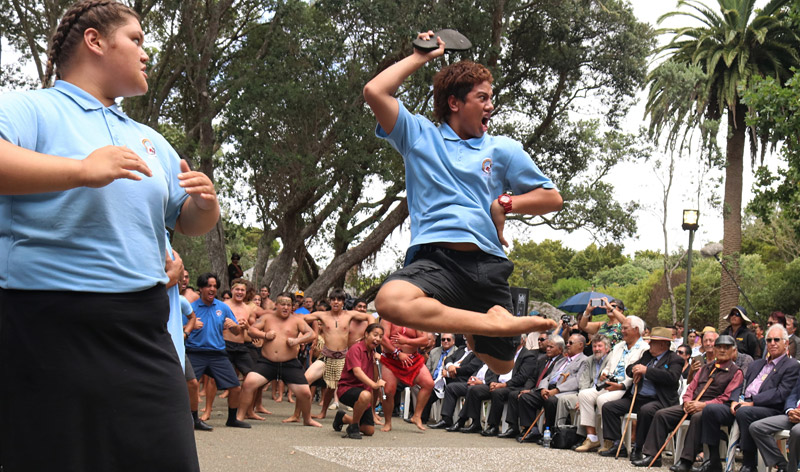
One of the speakers at Sir Hek’s tangi was Nainoa Thompson, the Hawaiian navigator who guided Hōkūle’a to New Zealand in 1985.
Thompson told mourners how close the world had come to losing the knowledge of traditional Polynesian voyaging, which had been ‘‘standing on the cliff of extinction’’ as diabetes and failing eyesight took their toll on Piailug. Another 10 years and it would have been too late.
Sir Hek then set about building his first waka hourua (double-hulled voyaging canoe), naming it Te Aurere after his home in Doubtless Bay, just west of Taipa.
Built from two kauri trees from Herekino Forest, the vessel measures 17m long by 5.5m wide and can carry a crew of 14.
Te Aurere’s maiden voyage to Rarotonga in 1992 proved it was possible to sail across the Pacific and back without modern navigational aids; in 1995, 10 years after Māori were challenged to embark on their own Voyage of Rediscovery, Te Aurere reached Hawaii. Sir James’ wish had been fulfilled.
· · · · ·
In subsequent years Te Aurere sailed much of the Pacific and several times around the North Island, but Sir Hek wasn’t finished.
One side of the Polynesian triangle — the longest, from Aotearoa to Rapa Nui (Easter Island) — had not been sailed by waka hourua.
Sir Hek’s beloved second wife, Hilda, died while they were still planning that voyage together. He was bereft but determined to continue, naming his second waka hourua Ngahiraka Mai Tawhiti in her honour.
The pair had met through kapa haka with a speaker at his tangi describing her as ‘‘the wind to his sail, the rudder to his canoe’’.

Ngahiraka Mai Tawhiti was completed in 2000; in 2012-13 the new waka supported Te Aurere in an epic 10-month, 10,000 nautical mile journey to Rapa Nui and back.
By then Sir Hek’s health and mobility was in decline and he had to leave much of the voyage to others. Instead he flew to Easter Island and was ferried to Te Aurere by boat, so the great navigator could be on board when his dream of closing the Polynesian triangle was fulfilled.
· · · · ·
Sir Hek’s skills and effort weren’t limited to bridges and waka.
He gave his time and machinery freely for Māori advancement projects around Northland, including building and carving six marae, while his expertise in kapa haka and mau rakau was recognised by life membership of Te Matatini, the national kapa haka competition.
During Sir Hek’s investiture in February 2019, Te Rarawa leader Haami Piripi told a story of how a young Hector Busby was chosen to lead the wero (challenge) when Queen Elizabeth was welcomed to the Treaty Grounds in 1953.
The young man’s skill was matched only by his confidence, Piripi said.
As Busby approached the royal party he threw his taiaha (spear) high into the air and caught it by rolling it down his arm and seizing it between his teeth. The move was daring and risky. Failure would have led to utter humiliation.
The young Busby, however, never doubted he could pull it off.
That self-belief — coupled with a refusal to accept anything was impossible — characterised all his endeavours, Piripi said.
That was echoed by Joe Conrad, kaihautu (captain) of the great waka Ngātokimatawhaorua and one of the generation of waka experts that followed Sir Hek.
‘‘He had vision, tenacity to get what he wanted, and drive. His favourite saying was: There’s no such word as can’t,’’ Conrad said.
‘‘He’d sit there sometimes and say, ‘Boy, I think we should do this,’ and I’d say, ‘Nah, that’s a stupid idea’ — but once an idea was locked in that big brain of his, he wouldn’t let it go. His mind could see the end of the tunnel where you can’t see and convince you there is light at the end of that tunnel. He’d just keep pushing and halfway there you’d suddenly see what he sees.’’
· · · · ·
Sir Hek was determined that Māori knowledge of ocean voyaging would not be lost a second time.
He invested great time and energy into training successors and set up a school on family land at Aurere, calling it the Kupe Waka Centre or Te Wānanga o Kupe Mai Tawhiti.
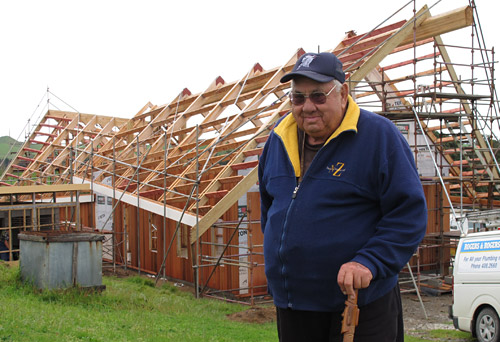
His waka centre already has a giant outdoor star compass for teaching celestial navigation, a carving school and a near-complete whare wānanga.
The ambitious project ran out of money and its future looked uncertain, but Sir Hek was never one to give up. A $4.6 million grant from the government’s Provincial Growth Fund in March 2019 means it can now be finished.
Joe Conrad said Sir Hek’s knowledge would “absolutely not” be lost again.
“The waka fraternity is solid, it’s strong. He evolved the waka kaupapa to where it is today and took it around the world. We must continue to evolve it, and hopefully we can take it to the next level.’’
· · · · ·
Sir Hek has long been held in high esteem in Te Tai Tokerau and around the Pacific — Randie Fong of the Polynesian Voyaging Society called him ‘‘the senior elder of the Pacific’’ — but recognition from wider New Zealand was arguably overdue when he received one of this country’s highest honours.
On February 4, 2019, in a powerful, tribute-filled ceremony at the Waitangi Treaty Grounds, he was made a Knight Companion of the New Zealand Order of Merit.
Prime Minister Jacinda Ardern sat next to him and held his hand through much of the ceremony.
After hearing news of his death, Ardern said she would never forget the passion and love on display for Sir Hek that day.
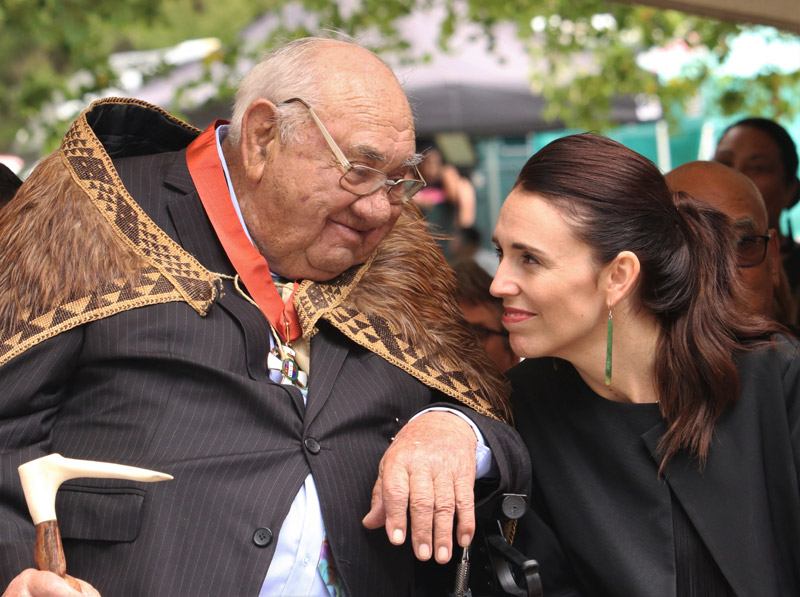
A few months later thousands of people, some travelling from as far away as Hawaii and the Netherlands, paid their respects during Sir Hek’s tangi at Te Uri o Hina Marae in Pukepoto, a stone’s throw from where he was born.
Among those helping in the kitchen was Māori-Crown Relations Minister Kelvin Davis.
He recalled visiting Sir Hek at home in Aurere and listening dumbfounded as the great navigator explained how he observed the stars and sea and used a simple diagram on a scrap of cardboard to find his way between specks of land thousands of kilometres apart.
‘‘His contribution has been immense. He probably single-handedly revived a whole body of knowledge that was on the verge of being lost forever but is now being carried on into the future — and it’s all because of Sir Hek Busby,” Davis said.
· · · · ·
Sir Hek has one last journey to make. This one is also taking him back to the land of his ancestors, but this time he won’t need a waka. As he travels he knows future generations will be able to cross the ocean relying only on their knowledge and the stars, just as their ancestors did centuries before them.
Because there’s no such word as can’t.
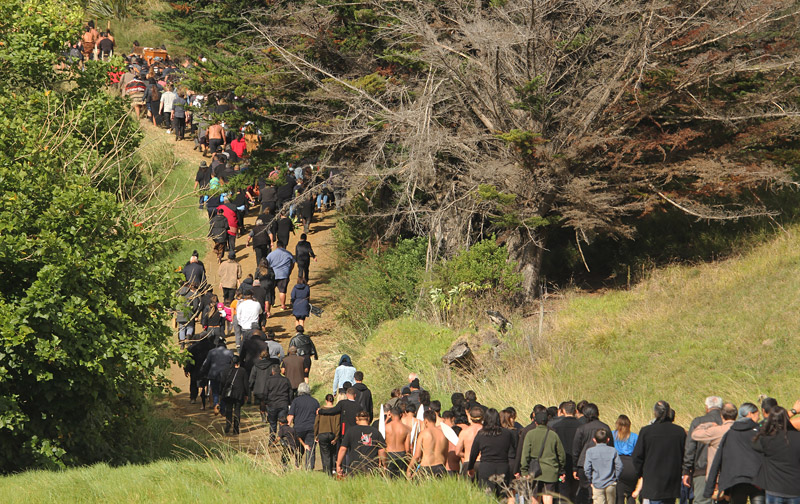
Sir Hekenukumai Ngaiwi Puhipi, also known as Hekenukumai Busby or Hector Busby, was born on August 1, 1932, and died on May 11, 2019. He was laid to rest with Hilda at Rangihaukaha Urupā, on a hilltop across the road from Te Uri o Hina Marae, on May 15, 2019. He is survived by eight children, two step-children, and more than 35 grandchildren, great- grandchildren and great-great-grandchildren.

